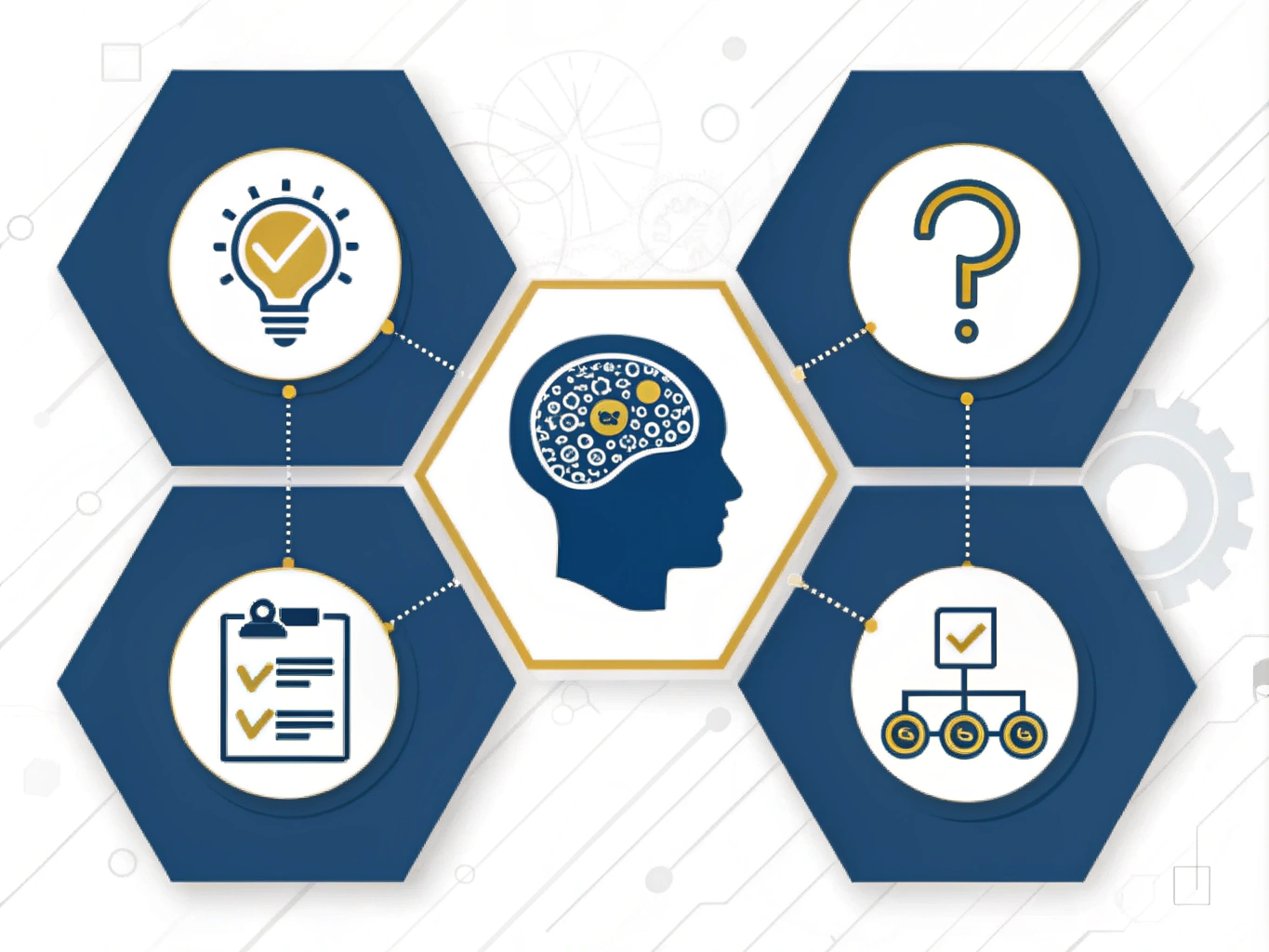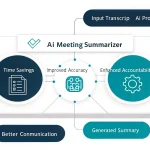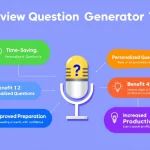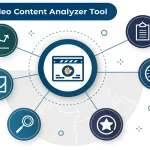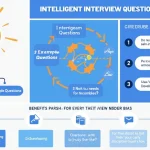Question Analyzer
Is this tool helpful?
How to Use the Question Analysis Tool Effectively
The Question Analysis Tool is designed to help interviewers, researchers, and content creators extract and analyze questions from a given piece of content. To use this tool effectively, follow these steps:
- Prepare your content: Gather the piece of content containing the questions you want to analyze. This could be a transcript of an interview, a blog post, or any text that includes questions.
- Copy and paste the content: In the provided text area labeled “The piece of content containing the questions to be analyzed,” paste your prepared content. For example, you could input:
- “What motivated you to start your business?”
- “How do you balance work and personal life?”
- “What’s the biggest challenge you’ve faced in your industry?”
- Submit for analysis: Click the “Analyze Questions” button to process your content.
- Review the results: The tool will generate an analysis divided into three sections: Questions, Analysis, and Recommendations for Interviewers.
- Copy and save: Use the “Copy to Clipboard” button to save the results for future reference or to share with colleagues.
Understanding the Question Analysis Tool: Definition, Purpose, and Benefits
The Question Analysis Tool is an advanced AI-powered system designed to enhance the art of questioning. Its primary purpose is to help users improve their interviewing skills, create more engaging content, and extract valuable insights from conversations. By analyzing the structure and content of questions, this tool provides a unique perspective on what makes certain questions particularly effective.
Key Features and Capabilities
- Question Extraction: Automatically identifies and lists all questions from the input content.
- Quality Analysis: Evaluates the effectiveness of questions in eliciting meaningful responses.
- Interviewer Recommendations: Provides actionable advice for crafting better questions.
The Importance of Effective Questioning
Asking the right questions is a crucial skill in various fields, including journalism, market research, human resources, and education. Well-crafted questions can:
- Uncover hidden insights and perspectives
- Encourage deeper reflection and critical thinking
- Build rapport and trust between the interviewer and interviewee
- Lead to more comprehensive and valuable information
By leveraging the power of AI, this tool helps users refine their questioning techniques, ultimately leading to more productive and insightful conversations.
Benefits of Using the Question Analysis Tool
1. Improved Interview Quality
By analyzing successful questions and providing recommendations, the tool helps interviewers craft more effective questions. This leads to richer, more informative interviews that yield valuable insights and engaging content.
2. Time-Saving Analysis
Instead of manually reviewing interview transcripts or content to identify effective questioning techniques, users can quickly obtain an AI-generated analysis. This saves considerable time and allows for more efficient learning and improvement.
3. Continuous Learning and Improvement
With each use, users gain new insights into what makes questions effective. This continuous feedback loop helps interviewers and content creators refine their skills over time, leading to consistently better results.
4. Versatility Across Industries
The tool’s analysis can be applied to various fields, including journalism, market research, human resources, and education. This versatility makes it a valuable asset for professionals across different sectors.
5. Enhanced Content Creation
For content creators, the tool provides inspiration for crafting engaging questions that can lead to more interesting articles, podcasts, or videos. This can result in higher audience engagement and more compelling content overall.
Addressing User Needs and Solving Specific Problems
Problem: Asking Generic or Ineffective Questions
Many interviewers struggle with asking questions that truly engage their subjects and elicit meaningful responses. The Question Analysis Tool addresses this by providing specific insights into what makes questions effective.
Example Analysis
Consider the following input:
- “Tell me about your typical day at work.”
- “What’s the most exciting project you’ve worked on recently?”
- “How do you see your industry evolving in the next five years?”
The tool might provide the following analysis:
QUESTIONS
- Tell me about your typical day at work.
- What’s the most exciting project you’ve worked on recently?
- How do you see your industry evolving in the next five years?
ANALYSIS
- Open-ended questions encourage detailed responses, allowing interviewees to share personal experiences and insights.
- Asking about specific examples (exciting projects) elicits more engaging and memorable responses.
- Future-oriented questions prompt thoughtful reflection and showcase the interviewee’s expertise and vision.
RECOMMENDATIONS FOR INTERVIEWERS
- Use a mix of open-ended and specific questions to balance breadth and depth of responses.
- Incorporate questions about personal experiences to make the interview more relatable and engaging.
- Include forward-looking questions to showcase the interviewee’s expertise and industry knowledge.
Problem: Lack of Structure in Interviews
Inexperienced interviewers often struggle with maintaining a coherent structure in their interviews. The Question Analysis Tool helps by identifying patterns in effective questioning sequences.
Example Analysis
For a series of questions like:
- “What inspired you to enter this field?”
- “Can you describe a typical day in your role?”
- “What’s the biggest challenge you’ve faced in your career?”
- “How do you see your industry evolving in the future?”
The tool might provide insights such as:
ANALYSIS
- The sequence progresses from past (inspiration) to present (typical day) to challenges and future outlook.
- This structure creates a narrative arc, helping the interviewee tell a cohesive story.
- The mix of personal and professional questions provides a well-rounded view of the interviewee.
RECOMMENDATIONS FOR INTERVIEWERS
- Structure questions to create a natural flow from past experiences to future perspectives.
- Balance personal and professional questions to build rapport and gather comprehensive insights.
- Use follow-up questions to delve deeper into interesting topics that arise during the interview.
Practical Applications and Use Cases
1. Journalism
Journalists can use the Question Analysis Tool to improve their interviewing techniques for various types of articles and reports. For example, a political journalist preparing for an interview with a local politician could input questions from previous successful interviews and receive insights on how to structure their upcoming interview effectively.
2. Market Research
Market researchers conducting focus groups or one-on-one interviews can benefit from the tool’s analysis to craft questions that elicit more valuable consumer insights. For instance, a researcher studying consumer preferences in the tech industry could use the tool to refine their questioning strategy, leading to more accurate and comprehensive market data.
3. Human Resources
HR professionals can use the tool to improve their job interview techniques. By analyzing successful past interviews, they can develop better questions to assess candidates’ skills, cultural fit, and potential. This can lead to more effective hiring decisions and improved employee retention.
4. Education
Teachers and educators can utilize the Question Analysis Tool to develop more engaging classroom discussions and assessments. By inputting successful discussion prompts or exam questions, they can gain insights into crafting questions that promote critical thinking and deeper understanding of the subject matter.
5. Content Creation
Podcast hosts, YouTubers, and other content creators can use the tool to improve their interviewing skills and create more engaging content. By analyzing questions from popular episodes or videos, they can refine their approach and potentially increase audience engagement and growth.
Frequently Asked Questions (FAQ)
Q1: Can I use this tool for any type of content?
A1: Yes, the Question Analysis Tool can be used for various types of content, including interview transcripts, articles, blog posts, and any text that contains questions. It’s versatile enough to handle different formats and subject matters.
Q2: How long does it take to analyze the questions?
A2: The analysis process is typically very quick, usually taking just a few seconds to complete. However, the exact time may vary depending on the length and complexity of the input content.
Q3: Can I save my analysis results?
A3: Yes, you can easily save your results by using the “Copy to Clipboard” button provided after the analysis. This allows you to paste the results into a document or note-taking app for future reference.
Q4: How often should I use this tool?
A4: For best results, it’s recommended to use the tool regularly, especially when preparing for important interviews or when looking to improve your questioning skills. Using it before and after interviews can help you track your progress and continuously refine your techniques.
Q5: Can this tool help with written content, not just verbal interviews?
A5: Absolutely! The Question Analysis Tool can be valuable for improving written content as well. It can help bloggers, journalists, and other writers craft more engaging questions for their articles, surveys, or interactive content.
Q6: Is there a limit to how many questions I can analyze at once?
A6: The tool is designed to handle a substantial amount of content, so you can input multiple questions or even entire interview transcripts for analysis. However, for the best results, it’s recommended to focus on a specific set of questions or a single interview at a time.
Q7: Can this tool help me prepare for specific types of interviews, like job interviews?
A7: While the tool is primarily designed to help interviewers improve their questioning techniques, it can also be valuable for interviewees. By analyzing common interview questions in your field, you can gain insights into what makes a strong response and how to structure your answers effectively.
Q8: How does this tool compare to traditional interview training methods?
A8: The Question Analysis Tool complements traditional interview training methods by providing data-driven insights and recommendations. While traditional methods often rely on general guidelines and personal experience, this tool offers specific, AI-powered analysis of questioning techniques, allowing for more targeted improvement.
Q9: Can I use this tool to analyze questions in languages other than English?
A9: Currently, the tool is optimized for English language content. However, future updates may include support for additional languages to cater to a more diverse user base.
Q10: How often is the AI model updated?
A10: The AI model undergoes regular updates to improve its analysis capabilities and keep up with evolving interviewing techniques and language trends. These updates ensure that users always have access to the most current and effective questioning strategies.
By leveraging the power of AI and advanced language analysis, the Question Analysis Tool empowers users to elevate their interviewing skills, create more engaging content, and extract valuable insights from conversations. Whether you’re a seasoned journalist, a market researcher, or an aspiring content creator, this tool provides a unique opportunity to refine your questioning techniques and achieve more impactful results in your professional endeavors.
Important Disclaimer
The calculations, results, and content provided by our tools are not guaranteed to be accurate, complete, or reliable. Users are responsible for verifying and interpreting the results. Our content and tools may contain errors, biases, or inconsistencies. We reserve the right to save inputs and outputs from our tools for the purposes of error debugging, bias identification, and performance improvement. External companies providing AI models used in our tools may also save and process data in accordance with their own policies. By using our tools, you consent to this data collection and processing. We reserve the right to limit the usage of our tools based on current usability factors. By using our tools, you acknowledge that you have read, understood, and agreed to this disclaimer. You accept the inherent risks and limitations associated with the use of our tools and services.
